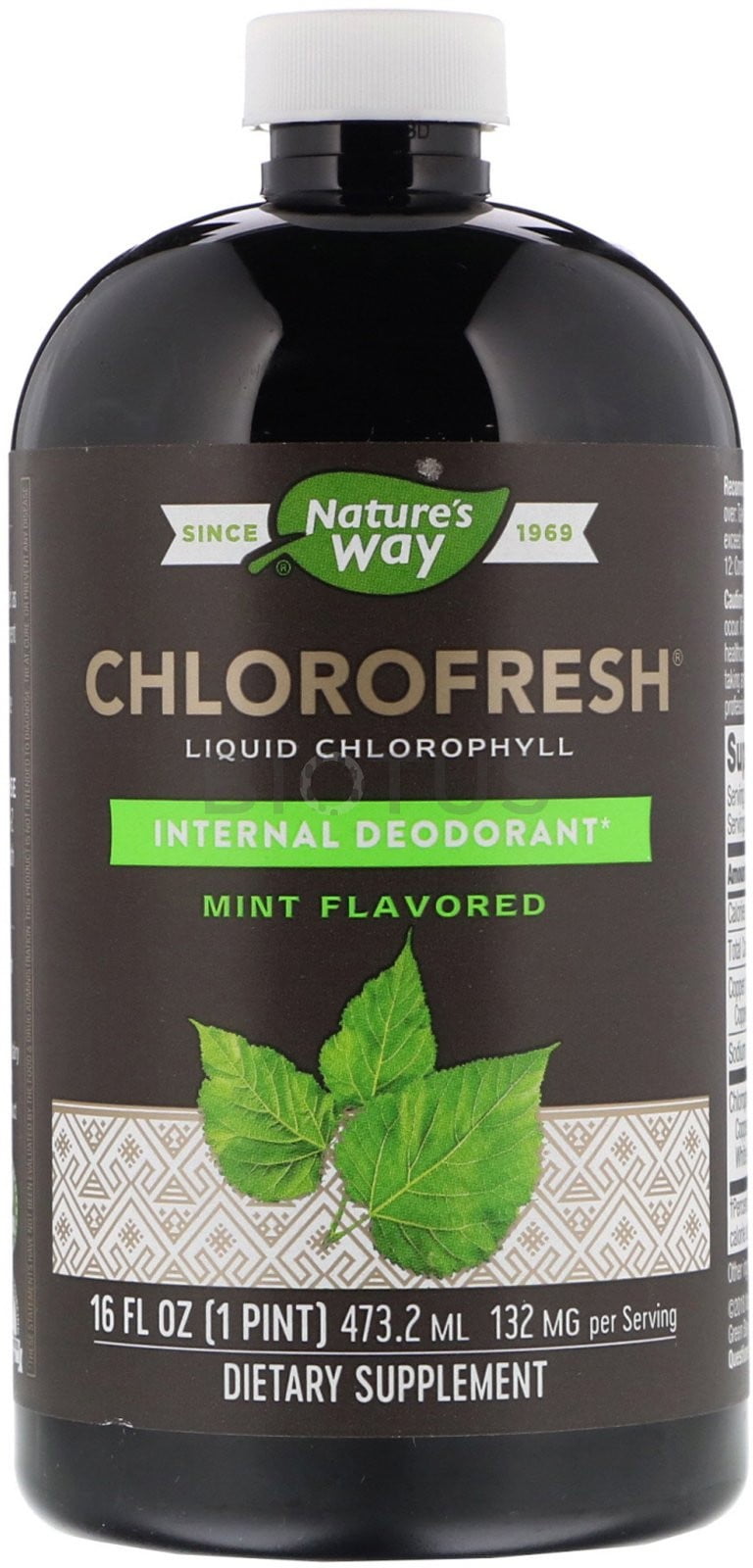

#LIQUID CHLOROPHYLL FREE#
However, the results of chlorophyll drops do vary, and so long as the drops you pick are organic and free of fillers, flavors or additives, as Hanway recommends, they’re worth a shot. The bottom line: Although chlorophyll drops may seem just as nutritional as eating leafy greens due to its vivid color, these drops miss the mark when it comes to including essential fiber. If I was choosing a supplement, I would choose drops as they are more likely to be absorbed, I would ensure it was organic and would make sure it did not contain any fillers, flavors, or additives. I have tried chlorophyll drops in the past and did not notice any beneficial effects. Personally, I would choose to get my chlorophyll from eating an abundance of leafy greens and sea vegetables as you are reaping all of the benefits of consuming the fiber also. What are the best sources of chlorophyll? I would caution against using too much, too often as it may cause digestive problems, or irritation if used topically. How much chlorophyll is safe to take According to the Food and Drug Administration ( FDA) 5, individuals over 12 can safely use chlorophyll between 100mg to 200 mg per day, with the maximum being 300 mg per day. Are there any precautions to consider before taking chlorophyll?Īgain, the clinical literature we have for chlorophyll is limited, and there are no studies on its long-term usage. In general, natural chlorophyll supplements are sold as chlorophyll drops, chlorophyll liquid, and chlorophyll capsules. However, the limited clinical studies we have on chlorophyll are mixed when it comes to results.
#LIQUID CHLOROPHYLL SKIN#
What are the benefits to chlorophyll?Ĭhlorophyll has been linked to benefits in reducing inflammation, skin healing (when applied topically), detoxification and weight loss. As such, I recommend chlorophyll drops as a supplement to a diet rich in green leafy vegetables and sea vegetables, not as a substitute. Is this an accurate nutritional substitute?Ībsolutely not! While chlorophyll drops do contain vitamins and antioxidants, they do not contain any of the fiber that we find in vegetables, which is so essential to our metabolic and digestive health. Many people claim that taking chlorophyll drops is a substitute for certain veggies. We spoke with nutritionist Jennifer Hanway to do just that. And while the ingredient does contain health benefits, it’s important to separate fact from fiction when it comes to its claims. By definition, chlorophyll is the green pigment found in plants-it’s what gives kale, spinach, algae and the like their vivid green hue. Some people who have tried chlorophyll say their skin has improved significantly within a few days.Chlorophyll is naturally found in most green vegetables, but when extracted, put into a dropper and mixed with water, it also has the ability to take social media by storm. You’ll notice a difference in how your skin feels and looks due to the increased oxygen. The body responds by making more RBCs (red blood cells). This deterioration can affect DNA and cause wrinkling and other skin issues. The ointment cut the painful condition’s duration by half and sped up the healing process.Ĭhlorophyll also contains antioxidants and vitamins A, C, E, and K, which make it a powerful weapon against free radical damage. A meta-analysis found commercial ointments containing papain, urea, and chlorophyllin superior to other wound treatments. Food sources include green leafy vegetables, wheatgrass, green tea, potatoes, and some algae and herbs. It is essential in the process of photosynthesis which allows plants to absorb energy from light.

More than that, it has anti-inflammatory and redness-reducing properties.Ĭhlorophyllin possesses anti-inflammatory and antibacterial properties that aid in wound healing. Chlorophyll is a green pigment found in plants. Chlorophyll is a green pigment that is found in algae and plants.

This formula may help manage acne’s mild-to-moderate severity when applied topically or taken orally. Also, liquid chlorophyll may aid in controlling the overgrowth of bacteria that leads to acne, blackheads, and whiteheads.


 0 kommentar(er)
0 kommentar(er)
